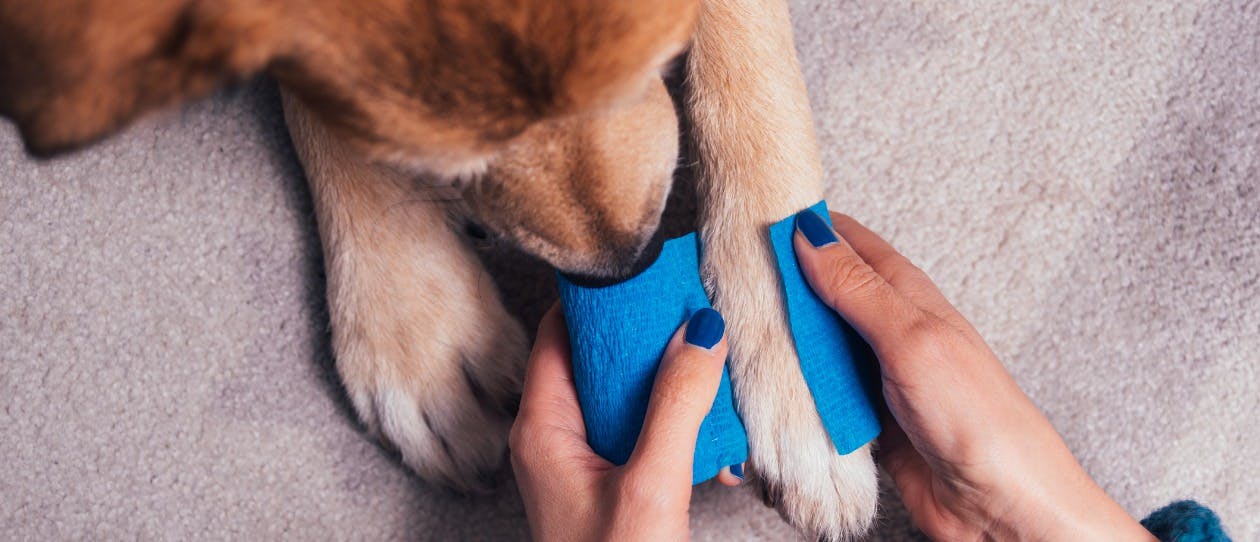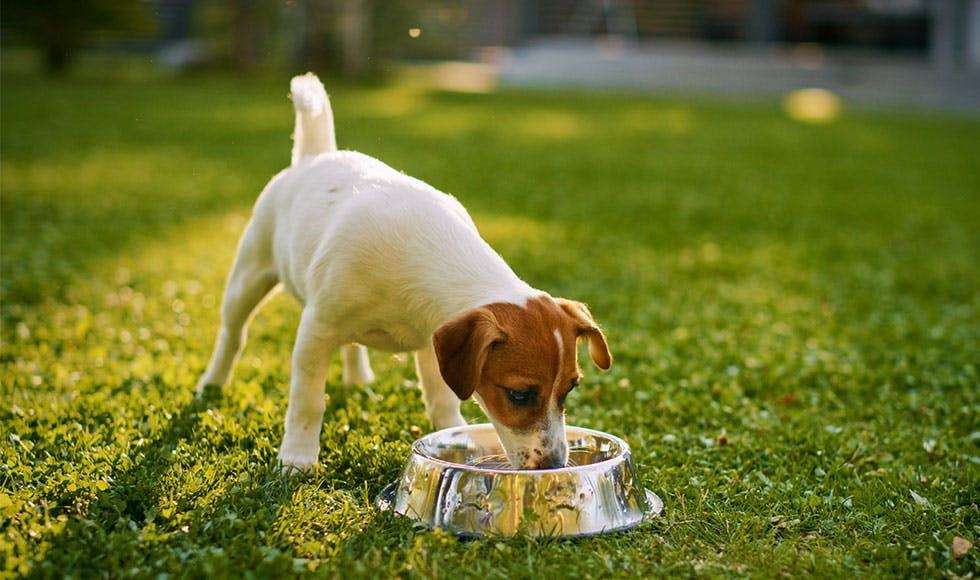
- A Guide To Perfect Your Pet's Health/
- Resources For Pet Wound Care/
- Treating Dog Skin Irritations


How to treat bites & stings on your dog.
From bee stings to bites, summer can be a hazardous time for pets who love walks in the park or any other kind of nature setting, as well as those who are prone to dog skin conditions.
Some dogs, just like humans, are allergic to bee stings. Grass seeds can become embedded in their skin and be potentially dangerous, while dog skin conditions can be aggravated by grasses or pollens that your dog is allergic to. But don’t panic, there are easy ways to make sure your dog enjoys walks without any drama, and to recognise when bites, stings, or other mishaps may be a problem that requires prompt action.
Bees, spiders and biting ants.
If your dog emits a sudden howl, paws at their face, limps, or chews their foot, they may have been bitten or stung. Typical reactions will also include a swollen paw or face and a spot that’s painful to touch. If you are still in the area where you suspect your pet has been stung or bitten, it’s a good idea to see if you can locate the insect. If your dog was bitten by a dangerous spider, for example, not stung by a bee or ant, they will need emergency medical treatment.
Extreme licking, dog itchy skin, or dog rash on their tummy, as well as puffiness or any trouble breathing, are also signs you should head straight to the vet. So too is difficulty swallowing, or excessive drooling, that can be due to swelling in the throat; dizziness or stumbling, and vomiting or diarrhea. A vet can help your dog with antihistamine and anti-inflammatory injections, or any other treatments needed to calm the allergic reaction. The good news, however, is that anaphylactic reactions are not common.
First aid for bites and stings.
Rather than a full-blown, triple zero emergency, a bite or sting is likely to make your dog uncomfortable and irritated. They’ll probably want to discontinue their walk, or their play time in the yard, and it’s smart to see they do. If your dog has suffered a bee sting, and the sting is still in the paw or face, it can be flicked out of the wound using a credit – don’t use tweezers that may break off the stinger. An ice pack, or frozen peas, wrapped in a tea towel, can help reduce swelling, and a bath with PAW NutriDerm Replenishing Shampoo may help dial down discomfort. You can also safely apply a canine wound care product, such as PAW Manuka Wound Gel.
If your dog keeps licking or scratching, you’ll probably need an Elizabethan collar to allow for healing time and to help prevent infection. Don’t be tempted to give them pain relief that isn’t prescribed, or ointments that are meant for humans.
Beware of grass seeds.
If you find a grass seed embedded under your pet’s skin, you could try to remove it from the base with tweezers. If you are not totally confident you can do this without breaking it off, see the vet.
Getting to know your pet’s play environment and avoiding places that have long or dry grassy areas can also minimise your dog’s chances of coming into contact with potentially dangerous grass seeds. Keeping your own lawn mowed and raked is a good idea, as is brushing your dog daily and checking their eyes, ears, nose and between their toes. Regular grooming also helps you build a bond with your dog.
Dog skin conditions.
Redness, rash, a pimple like bump on your dog, hives or even blisters can be caused by everything from plants to parasites. If your pet is prone to dog skin conditions, it can be difficult to keep them away from pollens, or whatever else may be irritating them.
However, you can try to reduce the inflammatory response by following a care plan from your vet that may include antihistamines and use of a supplement like PAW Dermega Omega 3 & 6 Oral Supplement that contains fatty acids to help promote healthy skin in dogs with inflammatory conditions. Regular shampooing with a PAW MediDerm Gentle Medicated Shampoo can also help reduce irritation and discomfort




